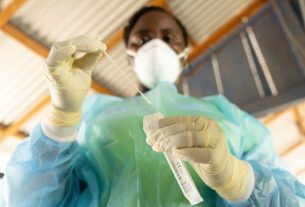As the general election campaign draws to a close, political leaders, candidates, and parties now face the anxious wait to see if their efforts over the past few weeks have paid off. For some, the campaign has been a blur of endless speeches, door-to-door canvassing, and strategizing; for others, it’s been a moment of personal reflection, especially for first-time candidates who entered the fray with little more than passion and a belief in their cause. With just hours left before voters head to the polls, the anticipation is palpable.
At a rain-soaked train station in Dublin, a first-time candidate reflects on the rollercoaster of emotions that have come with running for office. “It’s been exhausting, but it’s also been a learning experience,” they confess, acknowledging the paradox of elections where the stakes are high, yet the lessons come through trial and error. Now, all they can do is hope they’ve given it their all, leaving nothing behind as the polls open.
Across Ireland, in constituencies such as Dublin Central, Wicklow, and Cork South Central, political leaders from the medium-sized parties are preparing to cast their votes. Simon Harris of Fine Gael, Micheál Martin of Fianna Fáil, and Mary Lou McDonald of Sinn Féin will likely vote for themselves, a symbolic act that underscores their central role in the campaign. But despite the heavy lifting and the intense campaigning, they will all be left wondering: Have we done enough?
The First Clue: Exit Polls
The first inkling of how successful each campaign has been will come tonight at 10pm, when RTÉ announces the exit poll results. These results, based on interviews with voters leaving polling stations, will give an early snapshot of how the electorate has cast their votes. However, while the exit poll will provide a sense of each party’s share of the first-preference vote, it won’t offer specifics on individual constituencies. That will come later, when tally teams begin their work on Saturday morning at count centres across the country.
The Counting Process: The Real Work Begins
It is in the count centres, where the votes are physically tallied, that the true picture of the election begins to take shape. Tally teams—often volunteers who work tirelessly to record vote transfers—will closely monitor how the proportional representation (PR-STV) system plays out. As the votes pass through, early results may give some indication of which candidates are leading in their constituencies, but the full picture won’t be clear until the afternoon when the final seat allocations are made.
This lengthy process, though laborious, is essential to understanding the result of the election. The beauty of Ireland’s PR-STV system lies in its fairness, with transfers of votes playing a key role in ensuring that the elected representatives truly reflect the will of the electorate.
The Path to Power
For Simon Harris, Micheál Martin, and Mary Lou McDonald, the wait will be excruciating as they monitor the tally results and look for early signs that their campaigns have resonated with voters. The candidates’ fates are now in the hands of the voters, and they must wait to see if their appeals for change, stability, or progress have been enough to secure a mandate.
Harris, whose party has long been in power, is hoping to maintain Fine Gael’s position at the helm, but faces stiff competition from Fianna Fáil and Sinn Féin. Martin, after a long career in Irish politics, is fighting to ensure that Fianna Fáil retains a significant role in the government, while McDonald has become a leading figure in Sinn Féin’s rise to prominence, campaigning on promises of social justice and a united Ireland.
What’s at Stake?
While much of the campaign has focused on national issues—such as housing, healthcare, and the cost of living—local issues also weigh heavily on voters’ minds. The election outcome will likely influence the future of Ireland’s political landscape, as each of the major parties is vying for power. However, it remains to be seen whether any party will secure an outright majority, or if coalition negotiations will be needed to form a new government.
As the day unfolds and the results begin to trickle in, the true impact of this election will start to take shape. Whether the leaders’ campaigns have translated into votes, and whether they will be able to form the government they envisioned, will soon be known.
Looking Ahead
In the coming hours and days, the fate of the Irish general election will be determined. The candidates, who have given their all over the past few weeks, will have to wait and see if their efforts have been enough to sway voters and secure their places in the next government. For now, all that remains is to wait for the tallying process to begin, and to see if this election will mark a turning point in Irish politics or simply continue the status quo.
As always, in the world of politics, nothing is guaranteed—except, perhaps, the uncertainty that comes with the final results.



